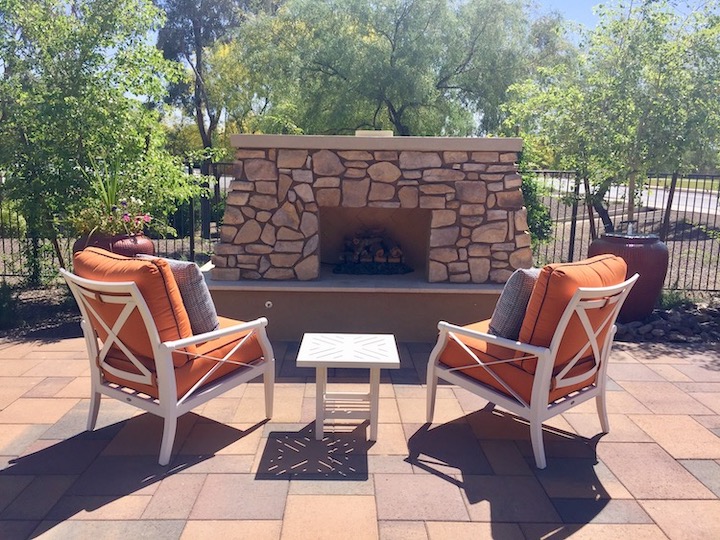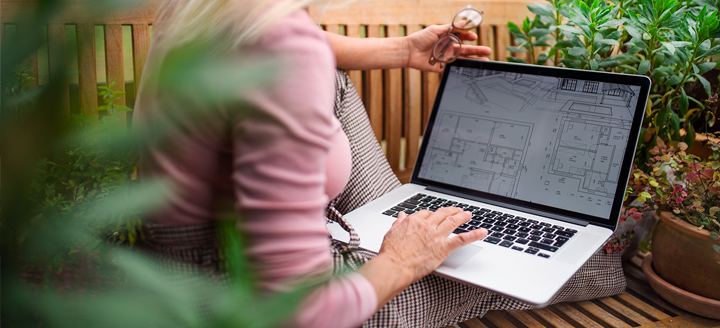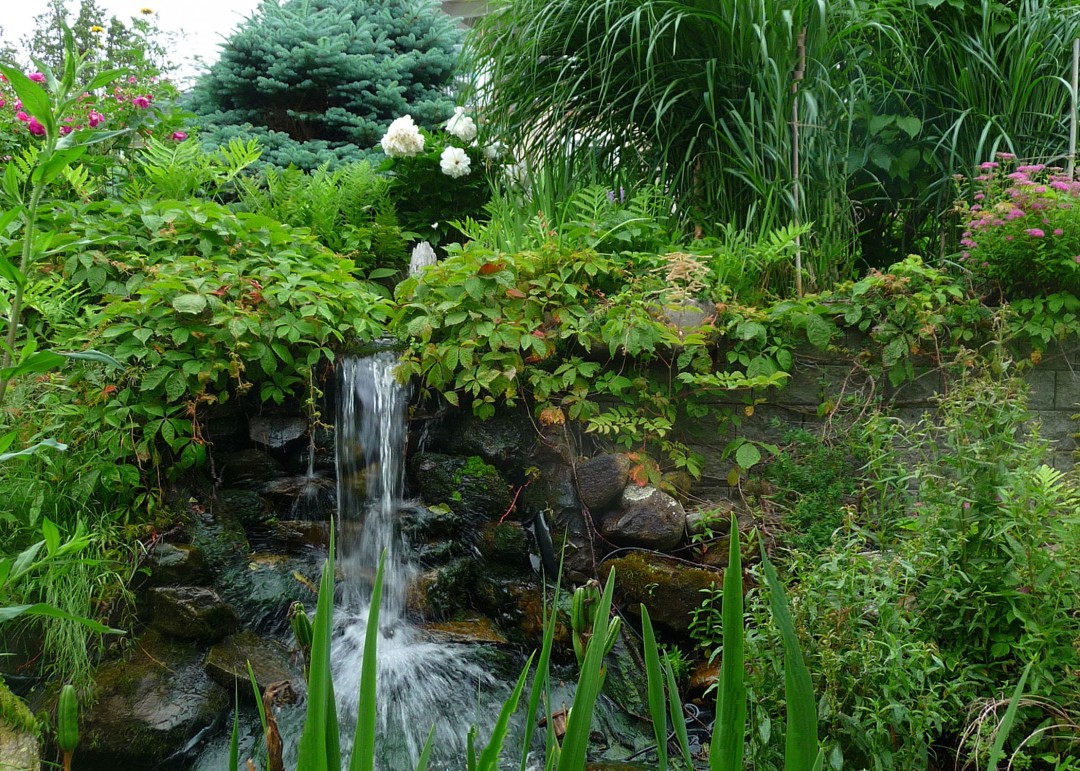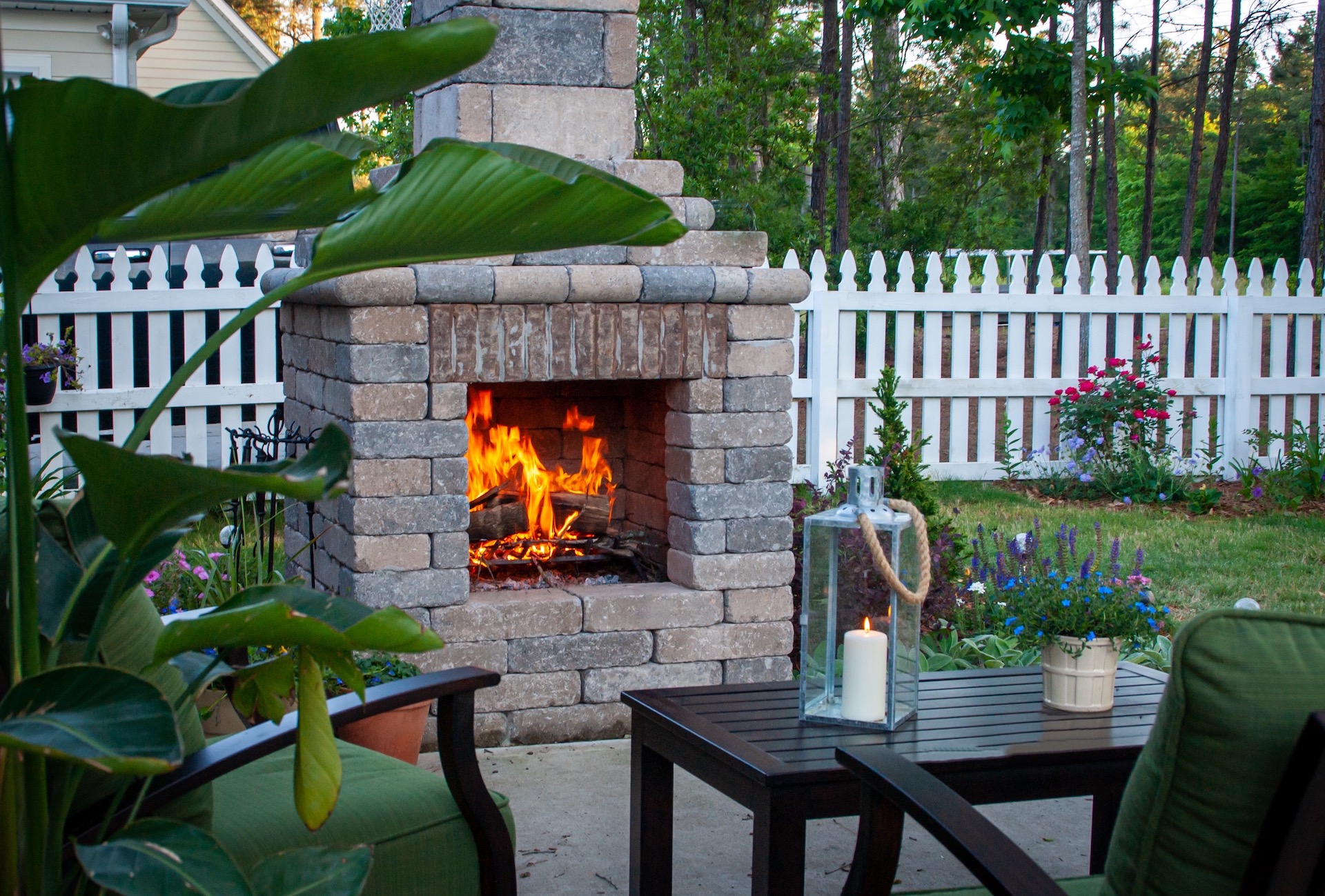Surely you will have noticed from your reading and research on landscaping that broad categories such as contemporary/modern, country or classic landscaping are often mentioned. Although certain guidelines (textures, colours, contrasts, materials, plants, and geometric shapes) can help us draw a distinction between them, it will sometimes be difficult to make sense of it all. Here’s some information that will help you guide your approach.
Contemporary landscaping and modern design
Raw materials are implemented in contemporary or modern design. Steel, concrete and glass are often present, but so are natural stone, wood and aggregates (river pebbles, gravel and wood chips). In fact, what matters is the way the materials are arranged that defines the style. Here, contrasts of texture, colour and geometric form are stressed. The lines must remain clean, the choice of materials harmonious and the plants carefully spread out to enhance the desired effect.
In this regard, we often associate perennials (grasses, boxwood and shrubs with colourful foliage) as elements that add motion and colour. A judicious choice of plants will limit the time required for maintenance. You can also afford to add discreet lighting, water basins or shade sails to add dynamism. It’s possible to imagine almost anything in contemporary architecture. Make sure you do not fall into the trap of trying to overdo it. Be minimalist, avoid the pizza effect by using too many different materials. If Picasso gets involved in your sketches, don’t hesitate to consult a professional.

Rural landscaping
When we refer to rural landscaping, we often imagine perch fences, pergolas, arbours loaded with climbing plants and field stone walls that remind us of the rocky dikes of our countryside. As we are very familiar with the vernacular landscape of the Eastern Townships, it makes sense to incorporate these elements into your design. Plants are often showcased with flower beds, hedges and imposing trees, alongside natural stones that can be used for walls, rock gardens, steps and patios.
While certain elements such as fireplaces, fire rings and artificial ponds can be integrated naturally without too much infrastructure, an organic signature is sought. The effect lies in the choice and arrangement of plants, decorative accessories, natural materials, and again, it’s best not to overload the scenery with unnecessary items. Flamingos lovers please abstain…

Conventional Landscaping
The classic style is structured, coherent and symmetrical! It’s stringency that dominates, and is well needed for maintenance. Leaving the surrounding nature aside, this type of landscaping tends to dominate over it, and no detail is neglected. Straight borders, well-trimmed plants, fountains, statues and sculptures can be integrated at the bend of a paved path or near a small pavilion. This type of outdoor design is a little less common in residential areas these days. It will still always remain stylish and impressive due to its flawless structure.

Which design best suits your needs? These models can be used as landscaping starting points and help you create a personalized, timeless and tasteful landscape design. Generally speaking, the style of your home, the constraints inherent to the relief of your lot and the elements to be integrated will dictate the path you will take.
Finally… your location will give you a good starting point to determine the right style. Be careful and mindful of your environment. Whichever style you choose, when integrating different elements, it’s important to maintain a balance, a unity of the whole and an enhancement of the surrounding landscape.
If you wish to learn more about the steps involved in a landscaping project, consult this ultimate guide right now! You’ll find which elements are important to consider when carrying out an outdoor landscaping project.


-752-1.jpg?width=2500&height=1667&name=Projet%20Manoir%20Hovey-Paysage%20du%20monde%20des%20affaires%20(Moment%20sublime)-752-1.jpg)
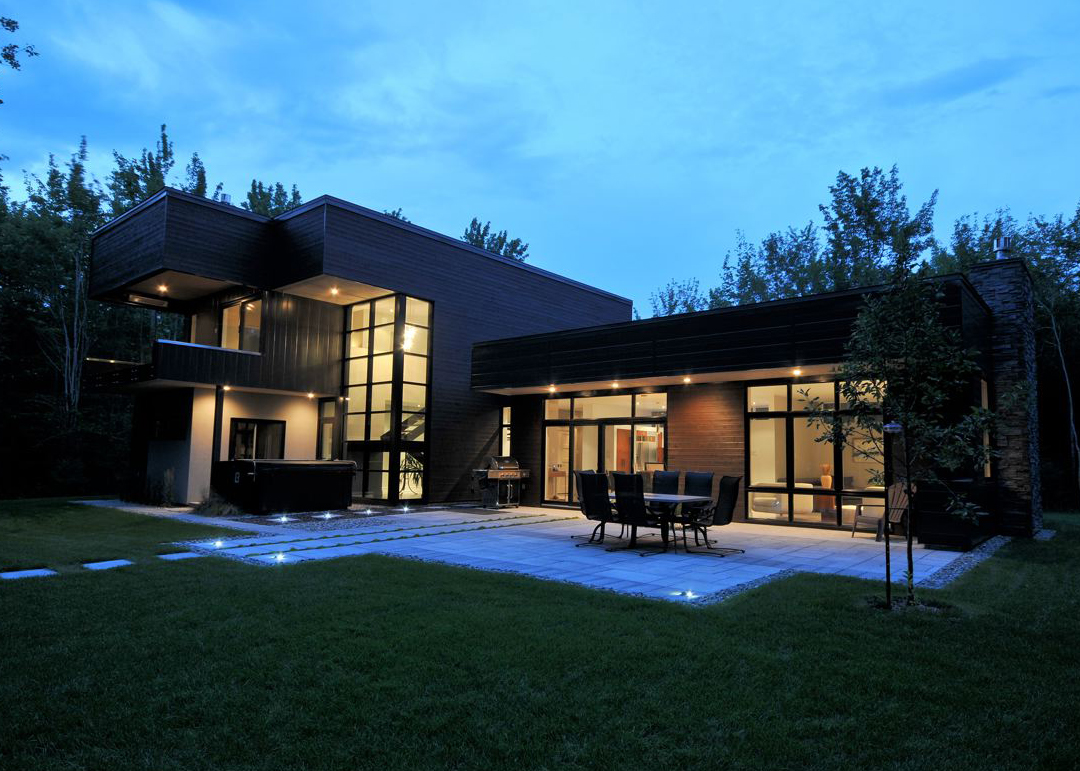

.jpg)
